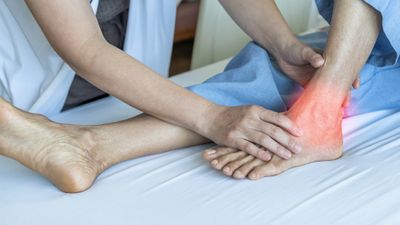Foot Health Blog
Find expert articles from physical therapists and podiatrists to help understand, diagnose, and treat different foot health issues such as plantar fasciitis, bunions, flat feet, and more.
Posterior tibial tendonitis
Best Insoles for Tennis Players With Posterior Tibial TendonitisPivots, quick forward and sideways movements, sudden jars and jolts—tennis can be rough on your lower limbs. But if you have posterior tibial tendonitis, the resulting pain, instability, and unsteady May 14, 2025
Posterior tibial tendonitis
4 Stages of Posterior Tibial Tendon Dysfunction and Their DiagnosesPosterior Tibial Tendon Dysfunction (PTTD) is a common cause of flat foot deformity in adults. It occurs due to damage to the posterior tibial tendon. The posterior tibial tendon connects the calf musFebruary 7, 2025
Posterior tibial tendonitis
Posterior Tibial Tendonitis: Symptoms, Causes, & TreatmentsThe posterior tibial tendon and the muscles it influences play an essential role in walking and supporting the medial arch. It is the second largest of the extrinsic foot tendons and connects one of tFebruary 17, 2023








